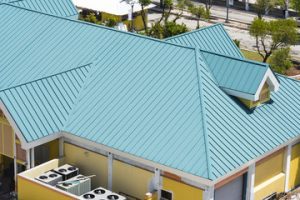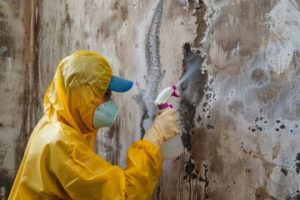Ox Movers Spring TX are no longer just lifters of boxes and furniture. They now offer tailored solutions for diverse relocation needs. From smart tracking to custom packing, the service has evolved. Moving is now a curated experience rather than just a task.

Digital platforms have redefined how movers connect with clients. Real-time scheduling and instant quotes offer transparency. Clients can track teams from dispatch to delivery. This visibility builds trust and improves efficiency.
Specialized movers now cater to different living styles. Some serve compact apartments with elevator challenges. Others handle countryside homes with large cargo and long access. Each team adapts methods based on layout and logistics.
Packing services have become more precise and strategic. Materials are selected based on item fragility and climate. Foam inserts and vacuum sealing are commonly used. These techniques protect valuables during long-distance travel.
Clients can now personalize moving experiences to their lifestyle. Options include eco-friendly packaging and reusable crates. Others request climate-controlled transport for sensitive items. Every move reflects the client’s values and priorities.
Short-notice moves are no longer chaotic and disorganized. On-demand teams can arrive within hours, ready to work. They bring pre-packed kits and mobile storage units. The process becomes fluid, responsive, and less overwhelming.
Digital inventories are created during packing stages. Each item is scanned, labeled, and recorded in the system. Clients view the inventory on their devices instantly. This eliminates confusion and adds peace of mind.
Long-distance movers offer modular containers that travel independently. These units are tracked by GPS in real time. Clients receive updates as their items cross each location. This service brings clarity to otherwise complex relocations.
Some movers now provide temporary storage with flexible terms. Clients can pause their relocation or store excess items. This solution helps during renovations, transitions, or space downsizing. Flexibility is central to modern moving.
Insurance coverage has also become more tailored. Clients choose from options based on item type and value. High-value items like instruments or artwork get specific policies. Assurance extends beyond transport into full asset protection.
Movers now train for handling unique items beyond basic cargo. This includes aquariums, pianos, gym equipment, and tech setups. Specialized training ensures safe disassembly and reassembly. It reflects a broader skill set and more technical support.
The rise of work-from-anywhere lifestyles has increased moving frequency. Movers adapt by offering recurring relocation packages. These plans support clients who move seasonally or for projects. Mobility becomes manageable and less stressful.
Environmental sustainability is a growing concern in moving services. Movers offer carbon-offset plans and sustainable transport options. Clients choose low-emission vehicles and biodegradable materials. Conscious relocation is a modern standard.
Some movers now offer digital move planners with automation. Users input their floorplan and belongings online. The system calculates packing requirements and ideal moving routes. Technology reduces guesswork and wasted time.
On-site assessments are done virtually using mobile cameras. Clients walk agents through their homes via video call. This allows accurate quoting and preparation without in-person visits. It saves time and adjusts to busy schedules.
Pet relocation is now a dedicated service offered by movers. Climate control, comfort breaks, and supervision are prioritized. Pet-friendly transport ensures animals arrive safely and stress-free. Families can move together with complete confidence.
Senior relocation teams focus on downsizing and emotional support. Movers assist with sorting, donating, and discarding items. They recognize the sentimental weight behind each decision. The process becomes respectful and sensitive, not rushed.
International movers provide multi-lingual support for clients abroad. Translation, customs paperwork, and cultural adaptation tips are offered. Clients navigate unfamiliar systems with professional guidance. Movers become relocation partners, not just transporters.
Art movers now use museum-grade crating systems. Fragile pieces are packed in climate-stable boxes with suspension features. Every movement is cushioned and controlled. The attention to detail elevates the service to an elite level.
Tech integration now allows full control through mobile apps. Clients confirm arrival times, sign digital contracts, and message drivers. It creates a seamless and connected moving experience. Convenience merges with control in every phase.
Corporate relocation has become a refined niche in the moving world. Movers coordinate office dismantling, document transport, and IT relocation. Minimal disruption and high security are prioritized. Businesses stay functional even while in transition.
Emotional labor is now acknowledged as part of the moving service. Movers are trained to handle anxiety, uncertainty, and change fatigue. They create calm with clear communication and steady action. Support extends beyond physical handling.
Eco-movers encourage decluttering before relocation begins. They partner with recycling programs and donation centers. Items find new homes rather than going to landfill. Sustainability and social responsibility intersect with mobility.
Movers often document fragile packing for liability transparency. Videos and images are shared in real time. Clients receive assurance and can reference footage if needed. This method adds professionalism and accountability.
Some movers now provide home setup services after delivery. They unpack, assemble furniture, and place decor as directed. It creates instant livable spaces without stress. Relocation turns into a transformation, not just movement.
Temperature-sensitive items receive thermal-safe handling procedures. Wine collections, medical supplies, and perishables are insulated. Cold chains are monitored with digital logs. Clients gain confidence through controlled environmental care.
Packing materials now come in customizable kits. Clients choose box sizes, wrapping types, and organizational tags. The process becomes intuitive and efficient. Preparation is as smooth as the move itself.
Remote regions are being served with mobile logistics hubs. These units deploy temporary workers, supplies, and vehicle support. Even off-grid clients can experience a full-service move. Geographic barriers no longer hinder relocation quality.
Modular furniture is rising in popularity among frequent movers. These pieces are designed for easy breakdown and rebuilding. Movers handle these elements with specialized tools and instructions. Convenience aligns with design in portable living.
Seasonal climate forecasting is included in some relocation packages. Movers adjust plans based on weather predictions. Rain gear, climate-protective wraps, and heat shielding are used. Forecasts prevent damage and protect worker safety.
Cultural moving consultants offer advice on etiquette and transition. They help clients navigate new environments with confidence. From home layout tips to neighborhood integration, they guide the process. Relocation becomes a bridge between cultures.
Some movers now partner with interior stylists. After unpacking, the stylist arranges items with visual balance. The result is both comfort and beauty. Clients walk into spaces that feel intentional and welcoming.
Digital payment options simplify transactions during high-stress periods. Clients use e-wallets, QR codes, or installment plans. Flexible methods match today’s fast-paced financial habits. Payment becomes an afterthought, not a hassle.
Furniture hoisting equipment allows movers to tackle tight spaces. Balconies and high floors are no longer obstacles. Mechanical lifts offer safety and speed. This opens options for buildings with limited elevator access.
Move-day concierge services are now offered for premium clients. One coordinator manages logistics, updates, and catering. Clients focus on transitioning while experts handle every detail. Luxury and peace of mind blend into one seamless service.
Some movers offer night-time or weekend options for quiet relocations. These schedules reduce traffic, stress, and business interruptions. Flexibility allows moves to suit lifestyle demands. Non-traditional hours create convenience and efficiency.
Movers often share post-move support contacts. This includes cleaning, repairs, and neighborhood welcome guides. Clients settle in faster with trusted resources. Relocation becomes an entry point into a better quality of life.
Community movers serve shared housing, shelters, and special needs groups. Their work emphasizes dignity, support, and compassion. They adapt tools and strategies to each unique case. Movers become allies in moments of personal transition.
With these shifts, the concept of moving has transcended transportation. It’s now an integrated service rooted in care, detail, and customization. Movers shape more than destinations—they define new beginnings. The journey itself becomes part of the story.








